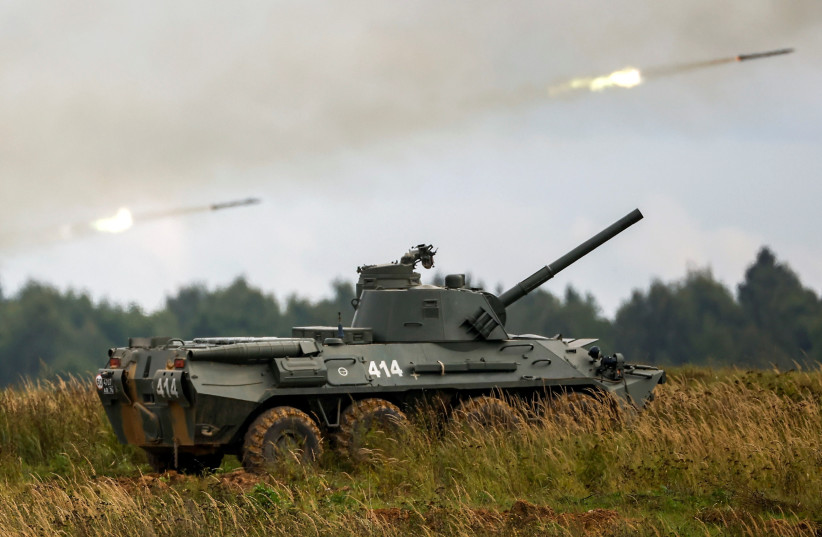Are there UAPs (the more modern equivalent to UFOs) flying over the skies of Ukraine? That's what three Ukrainian scientists claimed in September, but it has since been discredited by both Ukraine's national scientific agency and the Israeli-born Harvard astronomer and UAP expert Prof. Avi Loeb.
The original study, which wasn't peer-reviewed and was published online on arXiv, described Unidentified Aerial Phenomena (UAPs), which is a term that has seen increasingly prevalent usage in place of Unidentified Flying Objects (UFOs), being seen over the skies of Ukraine, a country that has already seen its skies filled with the chaotic activity of the ongoing Russian invasion. However, the Main Astronomical Observatory of the National Academy of Sciences of Ukraine (MAO NASU) has claimed that the study's methodology and results contained "significant errors."
These included "unreasonable conclusions" about the observations, rather than any sort of critical analysis to attempt to identify errors. Overall, the MAO NASU says the research was published prematurely.
As part of their criticism of the study, the MAO NASU requested that the paper be amended to say that the authors conducted an independent study, rather than saying the study was conducted by the MAO NASU itself. The three authors were all affiliated with Ukraine's national science agency.

What does the Israeli-born Harvard astronomer, UAP expert say about the Ukraine UAP study?
In a paper that has yet to be peer-reviewed, Loeb points out some issues in the original Ukraine UAP study.
In particular, he argues a matter of contention regarding the speed of the observed objects, which were calculated as flying at speeds of around 53,000 kilometers per hour. This is twice as fast as a hypersonic missile, and as Loeb points out, far exceeds what humanity is technologically capable of in our current level of rocket science.
In fact, the Ukraine UAPs were calculated to be so fast that, according to Loeb, the only explanation is that it must be a mistake.
The Ukraine UAP study described some of these UAPs, which they designated as "phantoms," as dark. However, according to Loeb, given the speed of these "phantoms," that should be impossible, because the speed in respect to their distance should have resulted in visible fireballs.
In other words, they would very much not be dark.
But all of this begs the question, if they weren't UAPs, then what were they?
Well, Loeb thinks he has that figured out, too.
Essentially, the researchers failed to conduct triangulation, a method to better ascertain something's location. This means the objects may actually be much closer than they thought. Specifically, Loeb suggests the Ukraine UAPs were 10 times closer than they thought.
With that in mind, Loeb points out the size of the objects, which were said to range between 3-12 meters originally. If the objects were actually 10 times closer than previously thought, they would be just 0.3-1.2 meters in size. This, Loeb points out, is around the size of an artillery shell. The fact that the object would also be much slower if it was 10 times closer than calculated also lines up with this conclusion.
And given that Ukraine has seen near-daily bombardments from Russian artillery shells for several months, this may seem like a far more likely explanation.
Now, whether or not Loeb's conclusion is accurate is unclear. After all, there isn't any way to verify if the Ukraine UAPs were true UAPs or just artillery shells from the Russian invasion. However, it is a strong possibility and lines up with previous reports about UAP sightings. As noted by the Office of the Director of National Intelligence (ODNI) in a 2021 report, some UAP reports are likely unidentified or misidentified military technology used by Russia, China or another nation-state.
Further, though the paper has not been peer-reviewed, Loeb is still bolstered by his reputation in the scientific community. The well-respected scientist and former head of Harvard University's Astronomy Department has become famous for his support for UAP studies and the Search for Extraterrestrial Intelligence (SETI). This has seen him become heavily involved in initiatives to better search for and study UAPs, such as his Galileo Project and his involvement with the Breakthrough Initiatives, a scientific endeavor funded by Yuri Milner.
In other words, the Ukraine UAP paper has a lot of holes, and the counterarguments by Loeb can't be verified, but it still seems a more likely alternative, given that the study didn't posit any alternative natural explanations for the observations.
But all of this merely reflects both the ever-present public interest in UAPs, as well as the ongoing confusion surrounding data about the Russia-Ukraine War.
